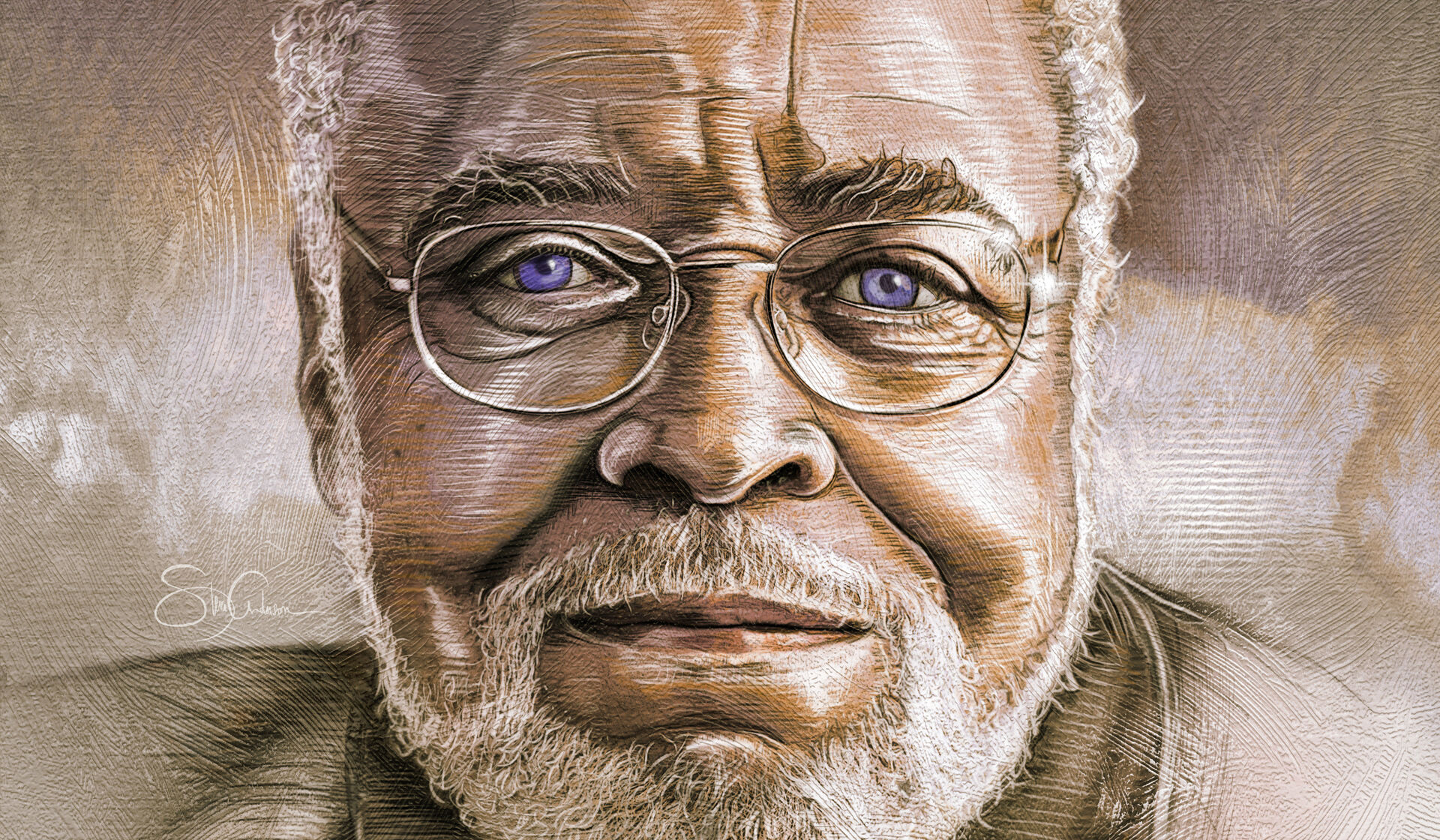Issues of diversity are an ongoing challenge to universities across the country, and U-M is no exception. But with a new plan in place, Michigan is taking a proactive approach to diversity, equity, and inclusion.
Arnold Reed, ’16, says he and other black students at Michigan decided they had had enough of what they felt was a hostile atmosphere in the fall 2013 semester. That November, the Theta XI fraternity posted an invitation on its Facebook page to a party dubbed World Star Hip Hop Presents: Hood Ratchet Thursday. The invitation welcomed “rappers, twerkers, gangsters (no Bloods allowed), thugs, basketball players” and used demeaning phrases to refer to black women.
Michigan students protested to the University, which condemned the party, and the fraternity canceled it and apologized.
But Reed, who served as the Black Student Union’s political actions chair, says more needed to be done. So the group launched a series of campus protests and created the hashtag Being Black at Michigan, #BBUM, encouraging students to post their experiences of feeling unwelcome on campus.
“We launched #BBUM because racial tension on campus was palpable,” says Reed. “#BBUM was our way of saying that black students at (Michigan) will not tolerate disrespect or racial insensitivity.”
One student who took part in the protests and on social media was Brie Milan Starks, ’16. She grew up homeless in Detroit and experienced a nomadic childhood, struggling simply to get to classes at Renaissance High School. When she won a four-year, fully paid scholarship to Michigan, she expected to be welcomed in Ann Arbor, which she thought would be a refuge from her tough urban experience.
But passersby on State Street often avoided looking her in the eye, which she equated with being black on a largely white campus. “It’s dehumanizing,” she says. “I see you, but you don’t see me.”
The protests and the hashtag drew national attention and resonated with U-M President Mark Schlissel, who took office in summer 2014. He convened a sweeping effort to draft a plan to improve diversity across the University’s campuses. In October 2016, the five-year Diversity, Equity & Inclusion (DEI) plan was rolled out.
Its goal is to create “a vibrant, diverse and inclusive campus in which every individual has the opportunity to be heard, to contribute and to excel.” DEI serves as an umbrella over 49 individual plans, from all 19 schools and colleges, the University administration, student life, athletics, and the health system.
Robert Sellers, PhD’90, U-M’s vice provost for diversity and inclusion and its chief diversity officer, oversees the DEI plan. He emphasizes there is not an end point, but that the program will constantly evolve. (The University has an email address, [email protected], for feedback and suggestions.)
Asked why the effort has taken such high priority on campus, Sellers replies, “It matters in lots of different ways. It matters in terms of simple issues of fairness and justice. As a public institution, we should better represent the state and the country and the world.”
Sellers says diversity also is a competitive issue for U-M, which must vie for top students with Ivy League schools, elite colleges such as Vanderbilt and Stanford, and universities around the world. “In order for us as an institution to reach our full potential and make a contribution to the public good,” he says, “we need diverse experiences, perspectives, and the opportunity for us to do a better job.”
The diversity plan is a top priority for Mark Bernstein, ’93, JD’96, MBA’96, chair of the U-M board of regents. He reached out to Reed and other members of the Black Student Union as soon as the demonstrations began. “I gained a real deep appreciation for the tension and challenges that black students face and feel at the University,” Bernstein says. “I also think there’s a heartfelt frustration with that unacceptable circumstance.”
Reed says he appreciated Bernstein’s effort. “He was able to understand and appreciate our struggles.”
Diversity is a competitive issue for U-M, which must vie for top students with Ivy League schools, elite colleges such as Vanderbilt and Stanford, and universities around the world.
Michigan has tried many times in the past to encourage more students and faculty from diverse backgrounds to come to Ann Arbor, with varying degrees of success.
In 1970, the Black Action Movement shut down campus for 18 days, ending when then-UM President Robben Fleming promised to set a 10 percent goal for African-American student enrollment and to open a center for black students on campus. Fleming was denounced by then-Vice President Spiro Agnew for his “surrender” to student demands.
Students, meanwhile, felt U-M was slow to address issues involving African-Americans and staged two subsequent protests in 1975 and 1987, prompting more vows to act. And there was progress. By 1997, U-M’s African-American enrollment peaked at 9.2 percent. But 11 years later it had fallen to 7 percent, and a statewide ballot issue dealt the University another setback. In 2006, Michigan voters approved Proposal 2, which bars race as a criterion in public education and public sector hiring. After a long legal battle, the U.S. Supreme Court upheld the legality of the ballot proposal in 2014.
Proposal 2 means Michigan cannot recruit students and faculty based on their ethnic backgrounds, nor can it award scholarships simply on that basis. That puts the University at a disadvantage to private universities, which can aggressively court students of color, and public universities in states where affirmative action programs are in place.
U-M’s enrollment of African-American students is now below 5 percent, and even U.S. Supreme Court Justice Sonia Sotomayor has taken note.
“When you look at the number of African-Americans at the University of Michigan, there’s a real problem,” she said during a visit to campus on Jan. 30. “And why is diversity important? … For me, the answer is quite simple: It’s because until we reach that equality in education, we can’t reach equality in the larger society. It starts here and it ends here.” (See page 10 for more about Sotomayor’s visit.) U-M has adopted alternative recruitment methods, relying heavily on word of mouth among alumni and faculty. (See the sidebar on page 41.) “We are very lawful in our efforts,” Sellers says. “And it is absolutely more difficult to do so with one hand tied behind your back.”
Through the years, students themselves have stepped up to help attract people from similar backgrounds.
Ken Salazar, JD’81, arrived on campus from Colorado in 1977, driving his pickup truck across the country to an apartment at State and Packard. “I’d never been to Michigan before,” he says. “I remember parking my truck and walking into the Law School and thinking how privileged I was to be there.”
When he arrived, he knew only one other Latino student: his roommate, who arrived in Ann Arbor the year before. But he quickly became active in La Raza, now called the Latino Law Students Association.
During his spring vacations, before his summer jobs, Salazar drove his pickup truck on recruiting missions to Texas, trying to drum up interest in Michigan among Latino students in Dallas, Austin, San Antonio, and the Rio Grande Valley. “We went from campus to campus,” Salazar remembers.
His efforts paid off. Now, 5.6 percent of students are from Hispanic backgrounds, which is actually higher than the 5 percent Latino population in Michigan.
“For me, (Michigan Law) has been the cornerstone of the successes I have had in life,” says Salazar, who served as Colorado’s attorney general and as Interior Secretary under President Barack Obama. “U-M in many ways planted the seeds for my public service career.”
It was a similar recruiting effort in China that helped convince Jiangtao Liu, MBA’15, to choose the Ross School of Business for his degree. Liu, who already held a PhD in thermophysics from a Chinese university, had a choice of schools, including Stanford, Carnegie-Mellon, and MIT. He picked Ann Arbor because he wanted a more tranquil, smaller city atmosphere than his crowded, smoggy hometown.
Michigan is extra special to him because his first son was born during his two years on campus. “Ann Arbor is a calm and friendly town,” says Liu. Deceptively so. He thought he had spotted a classmate and stopped to shake hands. The Caucasian student greeted him warmly, but told Liu they had never met. Liu laughs when he admits he had trouble telling his white classmates apart.
Chinese students are by far the largest group of foreign students at Michigan, with 2,717 of the 6,226 international students enrolled in winter 2017.
But Liu says he was surprised to encounter some mild anti-Chinese sentiment. It happened frequently enough that he would say to himself, “Not this again.” Liu remembers offhand remarks during lectures about “Made in China,” meaning cheap goods, akin to the “Made in Japan” slurs after World War II.
“I’m not easily offended,” Liu says. “But sometimes you can feel it.”
Sellers, hearing about Liu’s experience, replies, “I think we’ve got a way to go. Our effort isn’t just about diversity. You can have a diverse environment, but if you don’t have an environment where everyone feels equal and feels included, then you don’t have a diverse environment. You have to feel comfortable.”
“We cannot be excellent or remain excellent unless we are diverse.” – U-M Regent Mark Bernstein
But issues continue, at Michigan and elsewhere. In February, Michigan engineering and computer science students were sent racist, anti-Semitic, and threatening emails. At Indiana University that same month, fliers from a white supremacist group were posted on campus. And last fall at Baylor University, a white student shoved and called a black classmate the N-word. Hundreds of Baylor students subsequently showed up to walk her to class, and the university said it “wholeheartedly condemned” the incident.
Sellers acknowledges that the diversity plan will not immediately create an equitable environment. And he cautions against using a single standard to measure all University departments.
“The University is an enormously complex institution with many stakeholders,” agrees Bernstein. “It’s the job of the board to listen and then to seek ways to be as productively impactful as possible.”
Reed, now a law student at Indiana University, says he’s watching to see whether the University sets concrete goals and deadlines for achieving them. “It is a huge plan,” he says of DEI. “What’s important is communicating that to the students who are depending on the plan. Through communication, we can continually find ways to progress and create new avenues of action if necessary.”
From the regents’ perspective, Bernstein says he has a simple measurement for whether the DEI has worked. “We understand that diversity and excellence are inextricably linked. We cannot be excellent or remain excellent unless we are diverse.”
Steps Forward
AMERICAN TALENT INITIATIVE Michigan is one of 30 public and private universities nationwide taking part in the first phase of this program. Supported by Bloomberg Philanthropies, it is an effort to expand the number of low- and moderate-income undergraduate students. All of the universities involved have graduated at least 70 percent of their students within six years. The goal is to attract, enroll, and graduate 50,000 more of these students through 2025. Eventually, 270 colleges and universities are slated to participate.
WOLVERINE PATHWAYS U-M has launched this free, year-round program for sixth and ninth grade students who live within the Detroit, Southfield, and Ypsilanti school districts in Michigan. Once admitted, students agree to take part every year through 12th grade. Programs focus on classes in science, math, and English; community service projects; cultural events and field trips; and visits to the Michigan campus. Internships also are available for some high school students. Those who successfully complete the program can receive full, four-year tuition scholarships to Michigan.
HAIL (HIGH ACHIEVING INVOLVED LEADER) SCHOLARSHIP The University is piloting this scholarship, which provides four years of tuition and required fees for high-achieving, low-income students from the state of Michigan. Students are eligible for federal financial aid to cover costs such as housing, and jobs are available so they can pay for textbooks. The first scholarships were awarded to 262 high school seniors who graduated and were admitted to Michigan in 2016; a second round of scholars will be chosen for 2017. The University will assess whether to continue the program once it has collected three years of data.
LEAD SCHOLARS PROGRAM The Alumni Association is addressing diversity on campus through its LEAD Scholars program. LEAD targets students from underrepresented backgrounds who have already been admitted to the University but need financial help to attend. For more information on the program and its newly launched $30 million drive, see the article on page 52.
Micheline Maynard is a contributor to Forbes and served as the senior editor with the NPR program “Here & Now.” She was a Knight-Wallace Fellow in 1999-2000.





